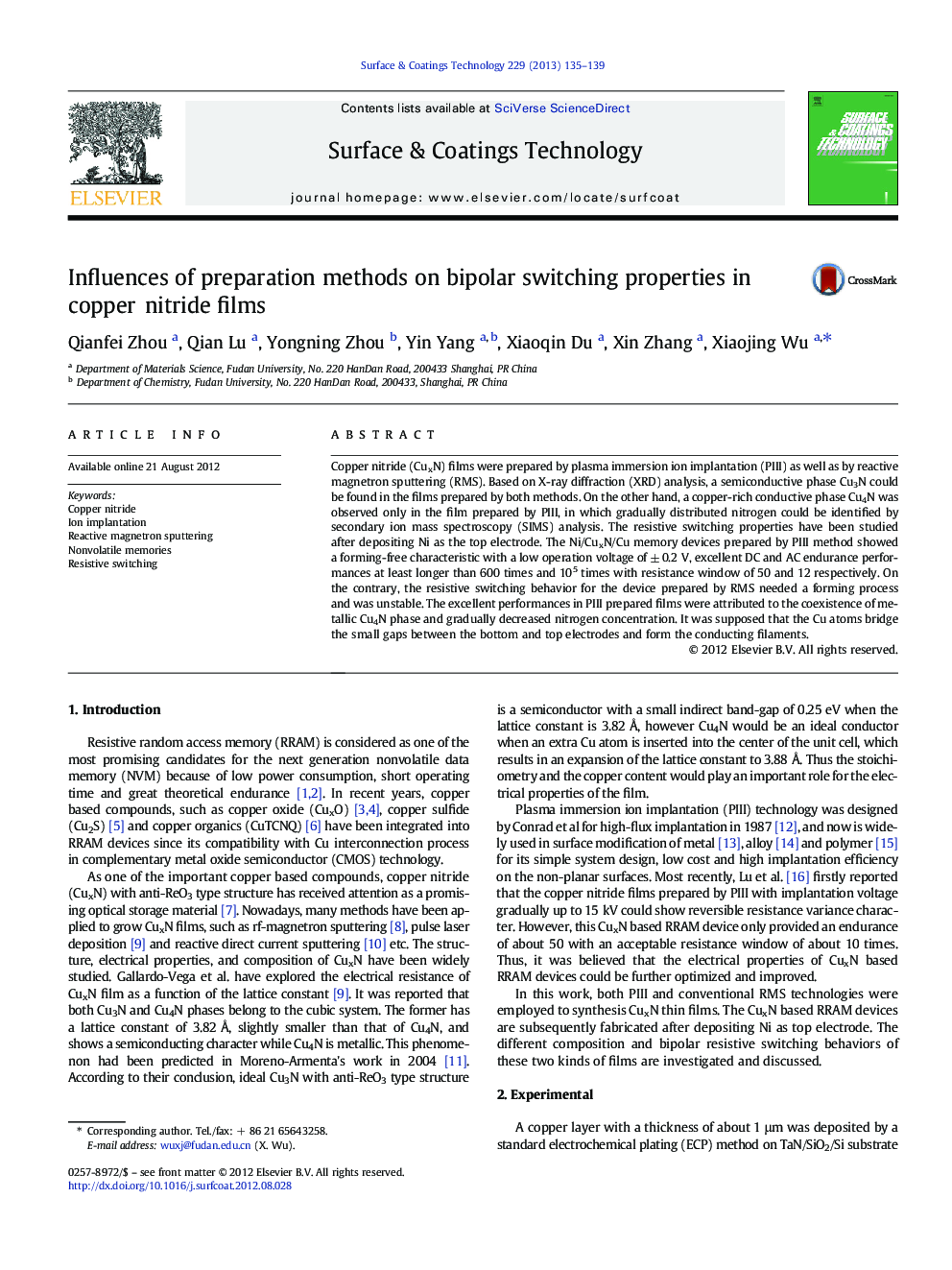| Article ID | Journal | Published Year | Pages | File Type |
|---|---|---|---|---|
| 1657936 | Surface and Coatings Technology | 2013 | 5 Pages |
Copper nitride (CuxN) films were prepared by plasma immersion ion implantation (PIII) as well as by reactive magnetron sputtering (RMS). Based on X-ray diffraction (XRD) analysis, a semiconductive phase Cu3N could be found in the films prepared by both methods. On the other hand, a copper-rich conductive phase Cu4N was observed only in the film prepared by PIII, in which gradually distributed nitrogen could be identified by secondary ion mass spectroscopy (SIMS) analysis. The resistive switching properties have been studied after depositing Ni as the top electrode. The Ni/CuxN/Cu memory devices prepared by PIII method showed a forming-free characteristic with a low operation voltage of ± 0.2 V, excellent DC and AC endurance performances at least longer than 600 times and 105 times with resistance window of 50 and 12 respectively. On the contrary, the resistive switching behavior for the device prepared by RMS needed a forming process and was unstable. The excellent performances in PIII prepared films were attributed to the coexistence of metallic Cu4N phase and gradually decreased nitrogen concentration. It was supposed that the Cu atoms bridge the small gaps between the bottom and top electrodes and form the conducting filaments.
► Two kinds of CuxN films were fabricated by PIII as well as RMS. ► The films showed different structure and composition by XRD and XPS analysis. ► The RRAM devices made by the films showed bipolar resistive switching property. ► Switching mechanism is due to the formation/rupture of Cu conducting filaments. ► The film preparing process strongly influences on the device electrical properties.
